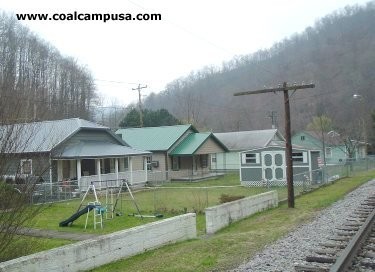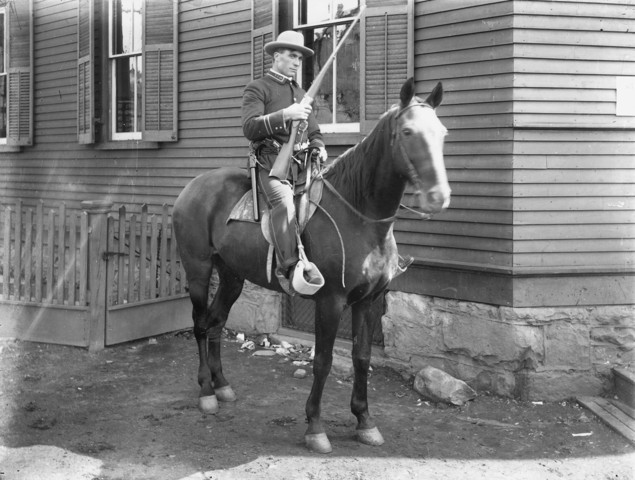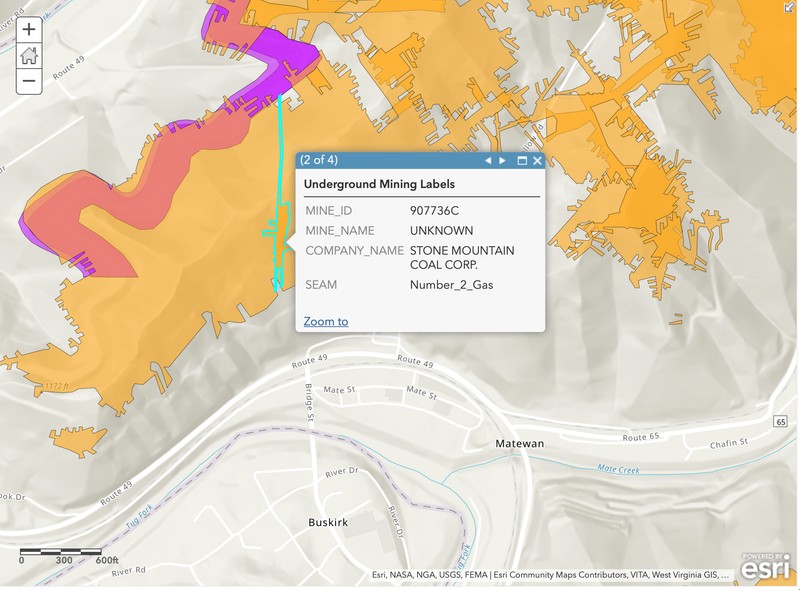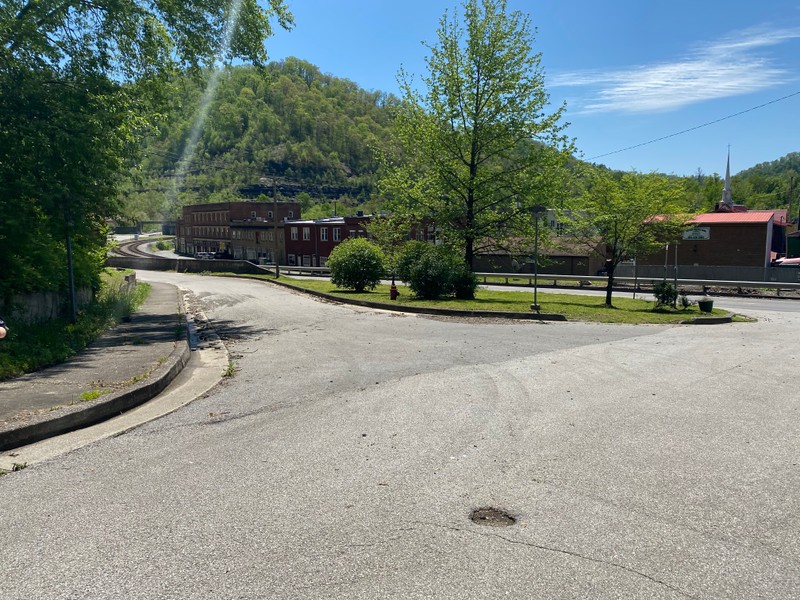Stone Mountain Coal Camp
Introduction
Text-to-speech Audio
Images
This photo shows remnants of Stone Mountain Coal Camp today.

This photo shows a Baldwin Felts Agent on his horse at Glen Jean, Fayette County, 1902.

This photo details a map of the narrow Stone Mountain Coal Corp Operation in 1918.

This photograph shows the mouth of Warm Hollow, a portion of the Stone Mountain Coal Camp.

Backstory and Context
Text-to-speech Audio
Stone Mountain Coal Camp was home to many miners--Blacks, whites, and immigrants--and their families while they worked for the company. Coal companies created a complete system of control over their workers. Not only did they own the mines, they owned entire towns: company stores (that accepted their own form of currency known as scrip), housing, schools, doctors, churches, and cemeteries. This authoritative system inspired songs such as the popular “16 tons” ballad by Tennessee Ernie Ford, with lyrics like “I owe my soul to the company store.”
These camps were almost always unincorporated. To keep order and maintain obedience among the camps, coal companies employed mine guards to police their towns and squash any efforts to organize for fair living conditions and basic civil rights. At Stone Mountain Coal Camp, these gunmen were the Baldwin-Felts Detective Agency. The guards exerted power over miners by brutal force and received the reputation as thugs. The mine guards answered to no one but the company and its operators.
Miners often had to sign “yellow dog contracts” in which the worker agrees not to remain in or join a union. Those who refused to sign were fired and Blacklisted from the mines. Once fired, miners and their families, along with what assets and furniture they had, were thrown out of their company-owned housing, forcing them to live in tent colonies for periods of time, and oftentimes, in harsh conditions.
During the early 20th century, miners across southern West Virginia collectively organized to form a union and enjoy basic civil rights such as freedom of speech and freedom of assembly, and better pay. By January 1, 1920, the UMWA had some successes organizing the Kanawha Coalfields; however, the companies still had a stronghold in Southern WV. On January 30, 1920, UMWA President John L. Lewis and District 17 President Frank Keeney held a public meeting in Bluefield, WV--home of the headquarters of the Baldwin-Felts Detective Agency. Here, they announced their intentions to organize the non-union southern counties of West Virginia, including Mingo, Logan, and McDowell. Some 3,000 miners responded to this call, including miners at the Stone Mountain Coal Corporation near Matewan.
Detectives arrived in Matewan on the Number 29 Train on the morning of May 19, 1920. The detectives had one intent that day: evict those who joined the union out of their coal company housing. They were led by Albert and Lee Felts, and made their way from North Matewan all the way down to Warm Hollow, carrying out evictions along the way. Thirteen detectives arrived in town that day, and only six would leave Matewan alive.
Various remnants of the camp are still found today, though there’s little there to recognize it and what happened. This Clio entry aims to remember those miners who fought for unionization and their monumental struggles that are often forgotten today.
Sources
Morrell, Venchie. Matewan Oral History Project Collection Sc2003-135, Venchie Morrell Interview, West Virginia Department of Arts, Culture, and History. June 17th 1990. Accessed May 1st 2020. http://www.wvculture.org/History/collections/Sc2003-135/mdcoralohp23.html.
Corbin, David Alan. Gun Thugs, Rednecks, and Radicals: A Documentary History of the West Virginia Mine Wars. Oakland, CA. PM Press, 2011.
Hull, Joshua. Sixteen Tons by Tennessee ernie Ford (Lyrics on Screen), YouTube . October 7th 2012. Accessed May 6th 2020. https://www.youtube.com/watch?v=EkRYuMqw-B0.
Savage, Lon. Matewan Massacre , e-WV . December 26th 2018. Accessed May 6th 2020. https://www.wvencyclopedia.org/articles/1576.
http://www.coalcampusa.com/sowv/williamson/matewan-west-virginia/matewan-west-virginia.htm
https://www.wvencyclopedia.org/articles/333
http://www.arcgis.com/home/webmap/viewer.html?url=http%3A%2F%2Fatlas.wvgs.wvnet.edu%2Farcgis%2Frest%2Fservices%2FCoal_Web_Mercator%2FAll_Mining_WM%2FFeatureServer&source=sd&fbclid=IwAR3mULFHhQ9YFxQQgzbmd9QhBnsbwaZNYxOnefy47BuRqRgmoGeTVcnexwo
